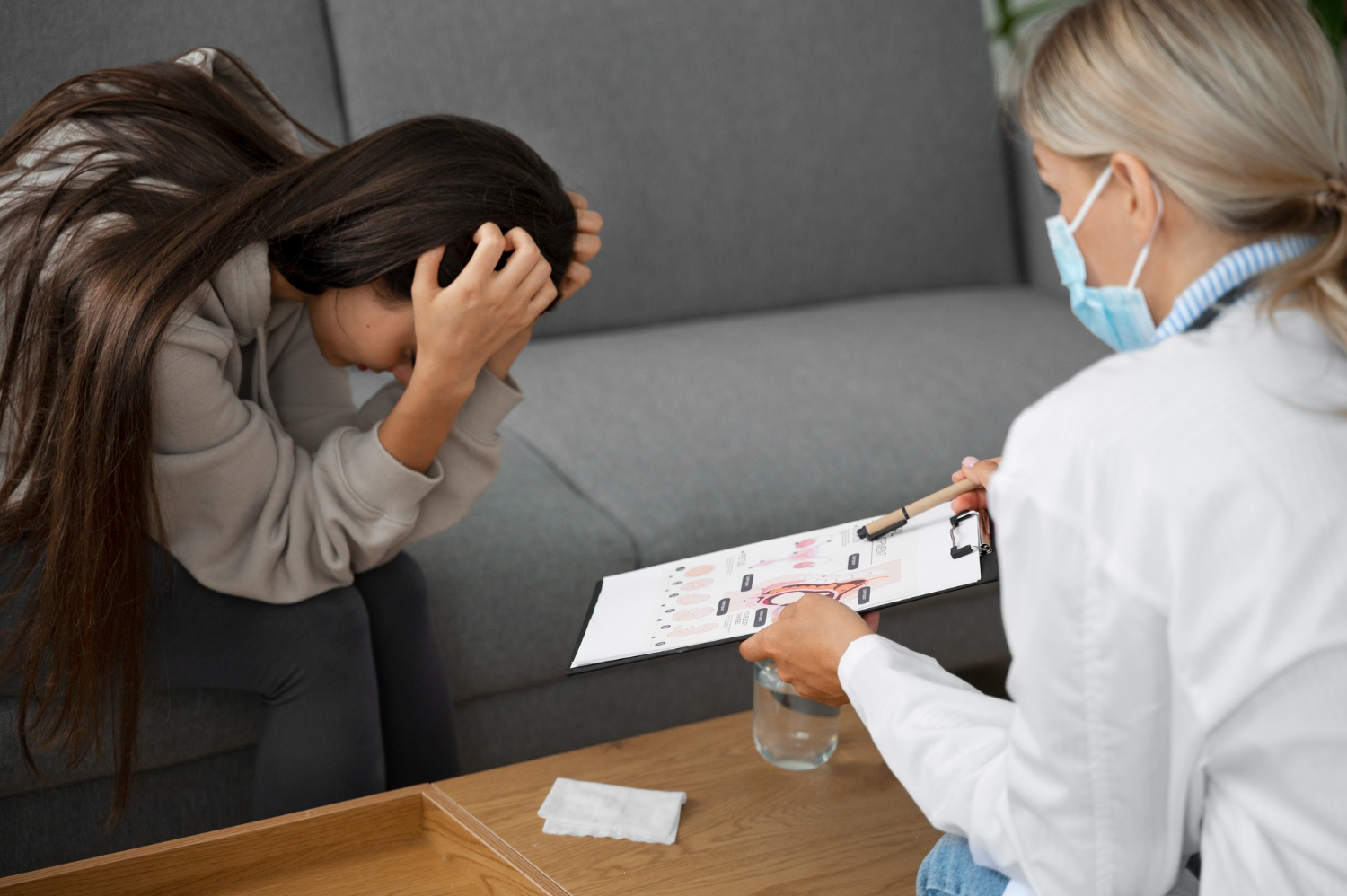Anxiety has become one of the most common mental health challenges in the modern world, affecting millions of people across all age groups and walks of life. At the same time, mild anxiety can feel like nervousness before a big event; more severe forms of anxiety can manifest as full-blown panic attacks, which can be overwhelming and frightening. Knowing how to stop a panic attack can be crucial to protecting your mental health. A panic attack comes without warning and often feels like it will never end. The rapid heart rate, difficulty breathing, and sense of impending doom can leave individuals feeling helpless and trapped. However, some strategies can help you manage and stop a panic attack in the moment.
In this article, we’ll explore what a panic attack is and provide practical tips for stopping one without relying on narcotic medications. If panic attacks are significantly affecting your daily life, Relevance Recovery is here to provide immediate help and quality mental health treatment for panic to keep you moving forward.
What Is a Panic Attack?
A panic attack is an intense surge of fear or discomfort that reaches its peak within minutes. It often comes on suddenly, even in situations where the individual isn’t faced with direct danger. Panic attacks can be triggered by stress, trauma, or underlying mental health disorders, but sometimes, they appear without an identifiable cause.
During a panic attack, individuals might experience:
- A racing or pounding heart
- Shortness of breath or a feeling of being unable to breathe
- Sweating or trembling
- Chest pain or tightness
- Hot flashes or chills
- Dizziness or lightheadedness
- A feeling of detachment or unreality
- An overpowering fear of losing control, dying, or “going crazy”
While panic attacks are not life-threatening, the physical and emotional symptoms can be overwhelming and may lead to avoidance behaviors, limiting one’s ability to participate in everyday activities.
Tips for How to Stop a Panic Attack
Knowing how to stop a panic attack in its tracks requires a combination of self-awareness, grounding techniques, and intentional actions to calm the mind and body. These tips don’t rely on narcotic medications, offering healthier alternatives that can be practiced anytime, anywhere.
1. Focus on Your Breathing
One of the most common symptoms of a panic attack is rapid, shallow breathing. This contributes to feelings of dizziness and loss of control, so slowing your breath can be incredibly helpful.
Try this breathing technique called “box breathing”:
- Breathe in for a count of four.
- Hold your breath for a count of four.
- Exhale slowly for a count of four.
- Hold your breath for another count of four.
Repeat this cycle until you feel your breathing begin to stabilize, helping your body return to a state of calm.
2. Use Grounding Techniques
Grounding techniques help shift your focus away from fear and onto the present moment, reminding you that you are safe despite what your mind is telling you.
One popular grounding exercise is the “5-4-3-2-1 Technique”, where you connect with your surroundings by identifying:
- 5 things you can see
- 4 things you can touch
- 3 things you can hear
- 2 things you can smell
- 1 thing you can taste
By engaging your senses, you redirect your mind from the panic and reaffirm your connection to the physical environment.
3. Practice Muscle Relaxation
Panic attacks often lead to muscle tension, which can amplify feelings of fear and anxiety. Relaxing your muscles can signal to your brain that you are safe and reduce physical discomfort.
Progressive Muscle Relaxation (PMR) is an effective technique:
- Start by tensing one group of muscles, such as your fists, for five seconds.
- Then, release the tension completely while concentrating on the sensation of relaxation.
- Gradually move through different muscle groups (arms, legs, shoulders, etc.), working your way through your entire body.
Combining this with deep breathing can amplify its calming effect.
4. Remind Yourself That It Will Pass
Panic attacks often feel like they will last forever, but this is an illusion. Most panic attacks peak within 10 minutes and subside shortly after. Reminding yourself that the attack is temporary can reduce the intensity of your fear.
Practice positive affirmations during the panic attack, such as:
- “This feeling will pass.”
- “I’ve felt this before, and I was okay.”
- “I am safe right now.”
Repeat these affirmations in your mind or out loud while practicing other calming techniques.
5. Engage in Distraction
Panic thrives on focusing inward, so engaging in a distracting activity can help you break free from the cycle of fear. Try doing something that absorbs your attention, such as:
- Counting backwards from 100
- Reciting the lyrics to your favorite song
- Solving a simple math problem or riddle
- Watching a video or listening to music
Distraction doesn’t cure the panic attack, but can help ease your symptoms in the moment and give you a sense of control.
Getting Professional Help
While the techniques above can help you manage a panic attack in the moment, persistent anxiety and recurrent attacks may indicate an underlying mental health condition that requires professional treatment. You don’t have to face this alone—seeking support is a courageous step toward lasting recovery.
Relevance Recovery offers a compassionate and comprehensive approach to mental health treatment, specializing in anxiety disorders and panic-related conditions. Our team utilizes evidence-based solutions, such as therapy, mindfulness-based practices, and holistic support, to help you regain control over your mental health and reduce panic attacks over time.
If anxiety or panic attacks are significantly affecting your quality of life, contact Relevance Recovery today. Our team is here to provide immediate help and guide you toward a brighter, more peaceful future. You don’t have to let anxiety dictate your life—take the first step toward recovery today.









